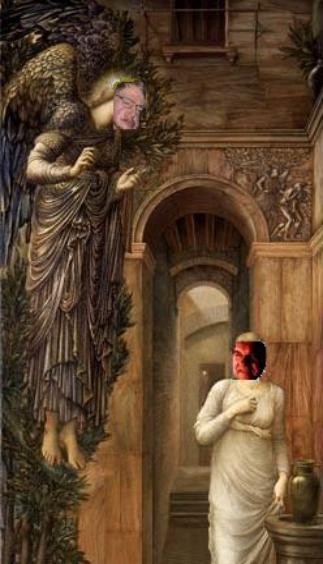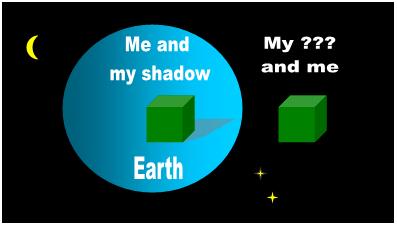| Adapted for the Internet from: Why God Doesn't Exist |
In order to determine objectively and unambiguously whether a word represents an object, we will use a single criterion: shape.
If we can point to and name an image, it is by definition an object. Otherwise, it is either a concept or space.
Plato argues that a shadow is an object and, in principle, he appears to be right. The word shadow meets two requirements:
shape and single-word. For example, an extraterrestrial (ET) may not be able to distinguish between a true object and a
shadow by simply looking at a 2-D image – we can just as well call 'it' X. However, a shadow also fulfills the criteria of a concept.
The prosecutor must allude to a second object to explain the word shadow. The tiebreaker is that a shadow does not have a
shape of its own. A shadow is not a standalone object. Without the tree, we have no shadow. This becomes obvious when we
take the object into deep space. The object has shape. The shadow doesn't (Fig. 1).
| Is a shadow an object or a concept? |
Fig. 1 Me and my shadow |
| A shadow is not a stand-alone object. This is easily demonstrated. Here on Earth, a cube has shape and casts a shadow. If we take the cube to outer space, the cube continues to have shape. It's shadow doesn't. Without a physical object, there is no such thing as a shadow. |


| Of course I'm not a physical object! Can't you see that I don't cast a shadow? |

- Module main page: After 3000 years, the birdbrains of Philosophy have no idea what a concept is
Pages in this module:
1. Is a hole an object or a concept?
2. This page: Is a shadow an object or a concept?
3. Are air, wind, fire, ocean, and gases objects or concepts?
4. Mathematical objects are concepts, not objects
- ________________________________________________________________________________________
- Copyright © by Nila Gaede 2008
